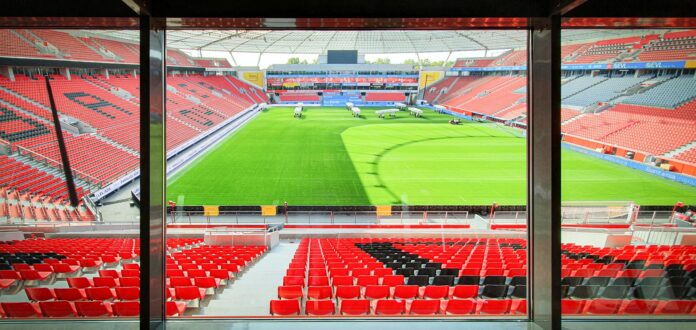Introduction
The complexities and nature of the Israel-Palestine conflict are broad and beyond the scope of this blog but for now we will focus on how the football world has reacted and the impact the world’s biggest and most global can have on such a war.
We know that the far-reaching influence of Football has a unique ability to transcend borders and bring people together. The game has played a significant role in the complex and longstanding Israel and Palestine conflict over the years and has already reacted in various ways to the recent escalation of the situation. The connection between football and this conflict has the power to foster unity, provide a platform for political expression, and even serve as a symbol of hope and reconciliation in a region marked by division. In this blog, we will delve into the intriguing link between football and the Israel-Palestine conflict, highlighting how the sport has reacted in the recent weeks since the conflict reached its brink and the difficulties that players, particularly those with large social media audiences and personal fan-bases have when it comes to speaking out on such a contentious topic.
Why Does Football Get Involved in Non-Football Matters?
Football, as a global game, possesses an undeniable influence on people’s views and perceptions. This influence extends beyond the boundaries of the pitch and into the realms of politics, war, oppression, racism, and various other societal issues. Players, as well as teams and organisations, have utilised their platforms to voice their opinions and concerns on these matters, often sparking important conversations. The ability of football to highlight important issues is both a positive opportunity and a challenge, with its impact subject to interpretation and criticism.
Players, particularly the global stars, are revered by millions and have used their status to advocate for social and political change across the years. Through gestures such as taking a knee to protest racial inequality or donating their earnings to charitable causes, footballers have demonstrated their commitment to important issues ranging from terrorism acts, demonstrations of inequality, and political issues affecting other parts of the world. In doing so, players have drawn attention to global injustices and initiated discussions that might not have otherwise occurred. This willingness to speak out on issues of war, oppression, and racism has been instrumental in raising awareness and pushing for change. In many cases, the actions and stances of footballers against or in support of certain matters has led to reactions and responses from decision makers and governments involved in the particular issue and had a beneficial impact leading to a positive outcome.
However, the involvement of football in politics and social issues is not without its complexities. Critics argue that the sport should remain neutral, providing an escape from the troubles of the world. When players wade into these contentious waters, they risk alienating segments of their fan base and even facing backlash from political authorities. Additionally, the oversimplification of complex issues in the world of football can sometimes lead to misunderstandings or misinterpretations of the facts, further complicating the relationship between the sport and politics.
Football’s Reaction to the Israel-Palestine Conflict
Football has made significant strides in contributing to a positive impact on the Israel-Palestine conflict over the years as the tensions have been long-standing. In general, International football organisations like FIFA have attempted to play a role in promoting peaceful coexistence. They support infrastructure development for football in the region and encourage collaboration between Israeli and Palestinian football associations. Additionally, football matches between Israeli and Palestinian teams before the recent escalation, would serve as symbols of hope and cooperation, drawing attention to the possibility of peaceful coexistence.
Prominent football players with global recognition have frequently used their platforms to raise awareness about the Israel-Palestine conflict and advocate for peace. Their efforts extend to social media campaigns, donations to humanitarian causes, and participation in campaigns focused on conflict resolution. Furthermore, sports diplomacy, youth engagement programs, and the values instilled through football, such as teamwork and respect, have all contributed to football’s positive role in the ongoing quest for peace in the region. While football alone may not be a comprehensive solution to the conflict, it serves as a compelling reminder that shared passions and common interests can transcend political boundaries and contribute to peace and reconciliation efforts.
In a sign of support and sympathy for the region since the conflict erupted, leagues and clubs across the football world have held minutes of silence and issued statements of unity towards those affected by the war and initial attacks. However, there have also been some controversial elements of football’s response such as the highly-debated decision of the Wembley Arch in England not to be illuminated with the Israeli colours. In many situations in the past including the France Charlie Hebdo attacks and Russia’s invasion of Ukraine, the famous arch has donned the colours of the country’s flags in an expression of football’s support. In the aftermath of the Israel-Palestine escalation, the English FA decision makers elected not to illuminate the arch with the blue and white colours of the Israeli flag which created backlash amongst the Jewish community.
The Difficult Situation for Players
Footballers themselves are now weighing up the possible consequences and advantages of either being outspoken on the conflict or keeping their opinions on the matter to themselves. Unfortunately there seems to be no single solution. For those that stay quiet, fans have condemned them for not speaking out and utilising their stardom and platform to express their views to their audience. On the other hand, those that have spoken out to differing extents, have also received significant backlash from various groups from football fans expressing disagreement with their beliefs to governing bodies, football associations and clubs taking disciplinary action on players that have taken stances in support of one particular side of the conflict.
Perhaps the best-known Muslim football player in the world, Mohamed Salah of Liverpool, this week released an audio recording of himself echoing the thoughts of many in the football world, calling for an end to the conflict and for people beyond just the football community to unite and prevent further deaths of thousands of innocent people on both the Israeli and Palestinian side of the conflict. Even after the release of this video, those that supported his views still expressed some criticism asking for Salah to take further material action to make a difference to quashing the ongoing war.
As well as Salah, Karim Benzema is a prime example of how a Muslim footballer with ties in a major European country be faced with condemnation despite attempting to show solidarity with victims of the war. France has accused the French footballer of connections with a Muslim brotherhood related to the Hamas group and calls for the possibility of removing his French citizenship has caused major debate.
For Benzema, playing in Saudi Arabia, an Islamic state, he has faced less of a backlash from the league there but for others playing in European leagues, governing bodies and football associations have been taking action against players who are speaking out on the conflict from their own personal platforms. For example, Anwar El Ghazi has been handed a suspension by FSV Mainz 05. The Bundesliga club reacted in response to El Ghazi’s pro-Palestine social media post calling for the freedom of the Palestinian people. The same has happened in France as OGC Nice where Algerian international, Youcef Atal was suspended for a similar social media post.
Within the Bayern Munich squad, tensions arose between teammates. Contrastingly to the examples discussed above, Bayern Munich decided against suspending or issuing disciplinary sanctions against Moroccan International Noussair Mazraoui after his pro-Palestinian social media post. However, it was reported that a teammate of his, of Israeli background, objected to his activity and publicising his opinion on the matter which led to heightened tensions and issues causing divisions in the team.
There are other footballers across the world who find themselves having to navigate the complex situation whilst under pressure to speak out and use their platform and status in society to make statements on the matter. It isn’t just fans that the players have minimal personal connection with, there is also external pressure from family and friends who have been known to urge their relatives and close ones to ensure they voice their support of one side as they have the social status to do so to make a difference. Furthermore, the players who do speak out are subject to large media scrutiny and even instances where sponsors have expressly distanced themselves from ambassadors who speak out on such issues causing financial, as well as reputation damage to the players.
It is a particularly hard situation as appearing to take sides will always cause significant backlash for the players that take it upon themselves to issue personal statements, regardless of which side they choose. However, if they are seen not to use their position in the public eye to express support of victims of the war, they will be accused of turning a blind eye to something that is affecting humanity cruelly and is far more important than any sporting consequences they might face.
Conclusion
In conclusion, football’s response to the recent escalation of tensions between Israel and Palestine underscores its unique ability to transcend borders and bring global attention to critical issues. While the sport has played a significant role in promoting peace, unity, and dialogue in the conflict, it also faces the complexities and challenges of navigating politically sensitive matters. Top players with large social media followings continue to grapple with the consequences of speaking out or remaining silent, while the football world itself has seen both acts of solidarity and contentious decisions.
Ultimately, football serves as a powerful reminder that shared passions can transcend political boundaries, but it also highlights the nuanced and multifaceted nature of addressing complex global conflicts through the lens of sport.















